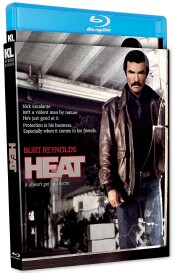“Well, I’ve been knocked down, blown up, lied to, s$#t on, shot at; I’m not a virgin except in my heart. Nothing much surprises me anymore except what people do to each other. I’m a licensed pilot, I lectured on economics at Yale, and I can memorize the front page of the New York Times in five minutes and read it back to you in five weeks. I was national Golden Gloves Champion three years in a row, and I’m fluent in four languages. And I lie … a lot.”
This was quite the experience for me. While watching this film, I keep experiencing an intense feeling of deja vu. It was as if I’d watched the film before. Burt Reynolds stars as a chaperone who hires himself out to escort folks while gambling in Las Vegas. He is eventually approached by an old friend after being roughed up, and he becomes embroiled in a situation that is far more complex than initially thought. It sounded a lot like another film I watched a few years back. However, it still didn’t dawn on me until after Reynolds’ opening scene in which he gets beat up after antagonizing a dorky guy and his girlfriend. Then a light bulb goes off, and I remember the 2015 Jason Statham film Wild Card, which is actually a carbon copy of this very film.
So this was a unique experience for me, as I am usually an advocate for the original always being the best because it usually sets the tone. However, this time around, I find myself arguing the opposite, as I must say that I enjoyed the Statham version more than the Reynolds version of this film. It is not that I disliked this film; as I previously said, the Statham version is essentially a carbon copy of this one in terms of dialog and characters. However, what the Statham film has over this one are the performances. Let’s take for example Nick Escalante vs. Nick Wild. While both characters display reserved intimidation, it is Statham who exudes and demonstrates the skills of the character better. Take the altercation in the hotel room. The choreography o the Reynolds version is wooden and slightly unrealistic, as the kicks he delivers to the bodyguards to appear to extend as high as advertised. In all fairness, this type of scene is right in Statham’s wheelhouse, as he is well known for his fight sequences and abilities. While I am not an expert on Reynolds during this era, it just seemed like it would have been more fitting to find him exchanging in fisticuffs than kickboxing. I just seem him as more of a brawler, and I think his scene would have played better to that strength. Comparatively, Statham’s beats this film out in regard to fight sequences.
There is an area where this film is on par with its successor, and that is dialog, particularly during the hotel confrontation scene, before things turn violent. When Reynolds confronts the film’s antagonist over the treatment of the young lady, who happens to be close to Escalante, it is here where I can see why the dialog was essentially copied and pasted into the 2015 adaptation. It is timeless and shows the personality of the film’s villain, who is just a little man with delusions of grandeur. This is highlighted when he shows no remorse for his actions, stating that it is impossible to disrespect who he perceives as a whore. Additionally, the character goes on to act big and bad in the presence of his bodyguards, belittling Escalante and cautioning him against interrupting him when he is talking. As I said, this was merely copied and pasted into the later adaptation, and I can see why. To me it is the best sequence of the film, closely rivaled by the monologue featured up above.
However, there is a sequence where the 2015 film outdid this one when the Nick character is hypothetically put on trial, which is a scene that has great deal of significance with me, as it was my favorite when I initially watched the 2015 scene. In this scene, it is less about the Nick character or Danny DeMarco than the person in the judge role for this mock trial: mobster Baby, who is a friend of Nick and DeMarco’s family who is in the awkward position of having to pass judgement and possible sentence for the alleged offense. In the 1986 version, this scene is rushed and lacks passion. It is as if it was sped through and offered no substance. However, in the 2015 version it is the exact opposite, as it reveals the depravity of DeMarco’s character and the depths he will go to for revenge. I think this has much to do with Stanley Tucci, who is cast in the role of Baby in the successor film. Tucci brings charm as well as quiet menace to the character, as it is clear that even though he likes Nick, he will not hesitate to kill him to keep the peace. However, while he is ruthless, he is also fair and refuses to act without concrete proof of Nick’s guilt. The Baby character felt more defined in the later version, which made all the difference in my opinion.
While I am a fan of the later version, I cannot discount this film, as it very much paved the way for the other film. Especially given that nearly everything in this film was carbon copy for that later addition. While there were some aspects that could have been improved to elevate the quality, this remains an enjoyable film and a worthwhile experience, even if it does prove that there is no such thing as an original idea in today’s Hollywood.



